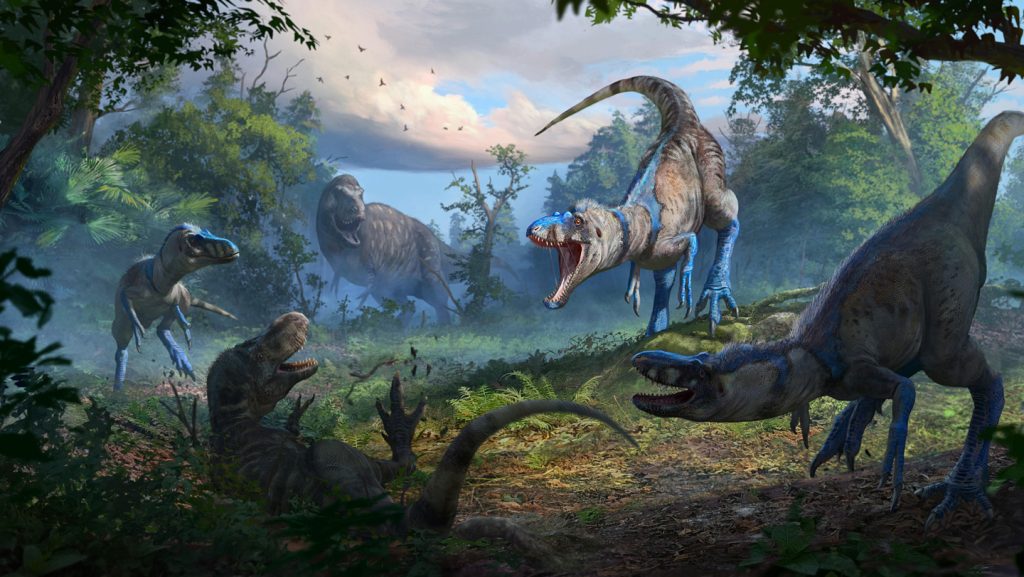Nanotyrannus: The Small Tyrant That Challenged Our Understanding of Dinosaurs
Recent paleontological discoveries have reignited one of the most contentious debates in dinosaur research. A newly unearthed fossil provides compelling evidence that Nanotyrannus, a relatively small tyrannosaur, may have indeed been a distinct species that lived alongside its famous relative, Tyrannosaurus rex, during the late Cretaceous Period approximately 68-66 million years ago. This finding challenges the long-held theory among many scientists that Nanotyrannus specimens were merely juvenile T. rex individuals rather than a separate species. The new fossil, remarkably well-preserved and discovered in the Hell Creek Formation that spans Montana, North Dakota, South Dakota, and Wyoming, offers unique anatomical features that suggest Nanotyrannus occupied its own ecological niche in the prehistoric ecosystem.
The significance of this discovery extends beyond simply adding another name to the dinosaur family tree. If Nanotyrannus is confirmed as a separate species, it would transform our understanding of the predator-prey dynamics of the late Cretaceous Period. Standing roughly half the size of an adult T. rex at about 15-20 feet in length, Nanotyrannus would have been a formidable predator in its own right. Its sleeker build and proportionally longer limbs suggest it may have been more agile than its massive cousin, potentially hunting different prey or employing different hunting strategies. The coexistence of these related predators in the same habitat raises fascinating questions about how they divided resources and whether they competed directly or specialized in different prey items to avoid competition.
What makes this fossil particularly valuable to researchers is its completeness and the preservation of features that may help resolve the ongoing scientific controversy. Previous Nanotyrannus specimens, most notably the “Jane” fossil discovered in 2001, have been at the center of the debate, with some researchers arguing they represent juvenile T. rex specimens while others point to distinct characteristics that wouldn’t change during growth. The new specimen appears to show a combination of mature bone features alongside the distinctive Nanotyrannus characteristics, such as more numerous and slender teeth, different skull proportions, and forearm anatomy that differs significantly from what would be expected in a juvenile T. rex. Advanced imaging techniques and microscopic analysis of bone tissues are being employed to determine the age and growth stage of this specimen, which could provide the definitive evidence needed to settle the species question.
The research team, composed of paleontologists from multiple institutions, has been meticulously studying the fossil using cutting-edge technology including CT scanning and histological analysis. By examining the microstructure of the bones, scientists can determine the age and growth patterns of the individual when it died. Preliminary findings suggest this specimen was a sub-adult or young adult individual that had already undergone significant growth but had not yet reached full maturity. Crucially, certain skeletal features appear to be fundamentally different from those seen in T. rex at any growth stage, strengthening the case for Nanotyrannus as a distinct species. The team has also compared the specimen with other tyrannosaurs from different locations and time periods to better understand how these predators evolved and diversified across North America during the late Cretaceous.
The implications of this discovery extend far beyond the taxonomic classification of a single dinosaur. It offers a window into the complex ecological relationships of the late Cretaceous ecosystem just before the mass extinction event that would wipe out all non-avian dinosaurs 66 million years ago. If two related tyrannosaur species did indeed coexist, it suggests the environment was rich enough to support multiple large predators within the same family. This parallels modern ecosystems where we see related carnivore species of different sizes occupying distinct niches within the same habitat, such as various big cats in parts of Africa or different species of bears in North America. The research also highlights how the dinosaur world was likely more diverse than previously understood, with specialized species filling various ecological roles rather than just a few dominant types in each region. This increased appreciation for dinosaur biodiversity helps paint a more accurate and nuanced picture of prehistoric ecosystems.
While the debate over Nanotyrannus’s status will likely continue until multiple specimens of various growth stages can be thoroughly studied and compared, this new fossil represents a significant piece of the puzzle. The research team has emphasized that they remain open to either conclusion based on where the evidence leads, demonstrating the self-correcting nature of scientific inquiry. Whether Nanotyrannus is ultimately classified as its own species or confirmed as a growth stage of T. rex, the investigation itself is advancing paleontological methods and our understanding of dinosaur growth and development. As technology continues to improve and more fossils are discovered, we may finally resolve the question of whether this small tyrant dinosaur hunted the plains and forests of North America alongside the king of the dinosaurs during those final years before the asteroid impact that would forever change life on Earth.


